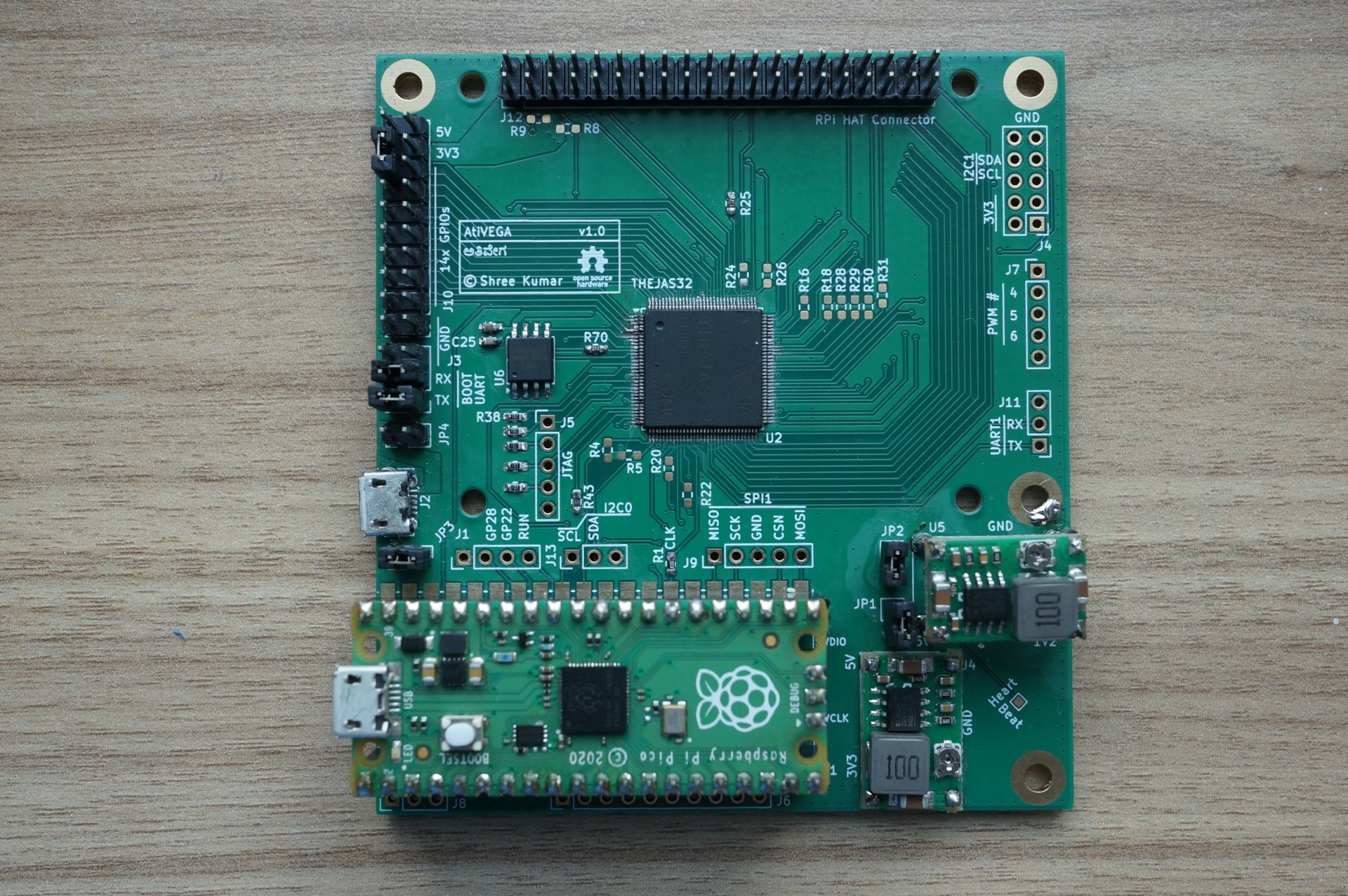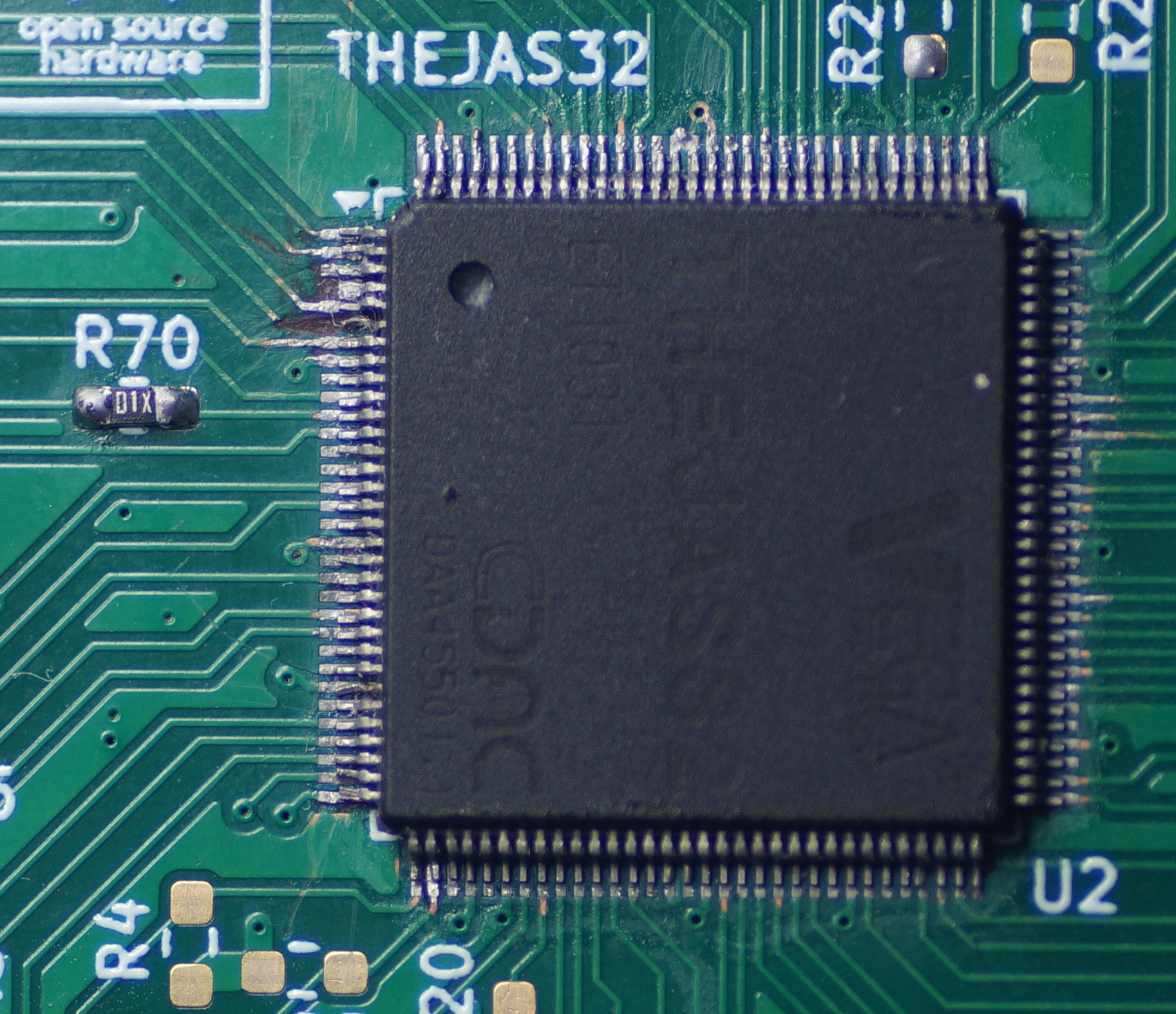I have been developing this concept and the board for a while. Some background behind this board and some reasons why I am developing it are covered in this talk that I gave at ChennaiFOSS 2024:
The entire project is available on github. I have been making slow progress over this for a few months now. Three weeks ago, I finalized the PCB and got a few boards made.
Boards came in quickly. I hand assembled one - the LQFP 128 package turned out to be quite a test for my soldering skills ! This is how the board looks

I was woefully out of practice. Trying to solder the finest component on the board first was hubris at best. I did damage one pad - a GPIO linking the THEJAS32 to the Pico (pin 6), but luckily the rest were fine. - here is a closeup with the gory details:

But the great news is - the board WORKS ! Bring-up was fun, and I learnt a lot too... longer long story in the next post.
So, what works ? The board boots. Code can be uploaded to THEJAS32 over UART. I can toggle a GPIO. I can run this microcontroller at 100 MHz - it's rated speed. And I have slowed it down to... hold your breath... 500 kHz ! Haven't gone lower than that at the moment - as it would take forever to boot, but I know I can go as slow as I need to. This is the only microcontroller I have seen where one can directly control the clock externally - much the same way as you would do in a verilog simulation. Bizarre, and interesting ?
Source code for a simple power on is on github too - checkout sw/bringup/poweron/poweron.c .
 Shree Kumar
Shree Kumar
Discussions
Become a Hackaday.io Member
Create an account to leave a comment. Already have an account? Log In.